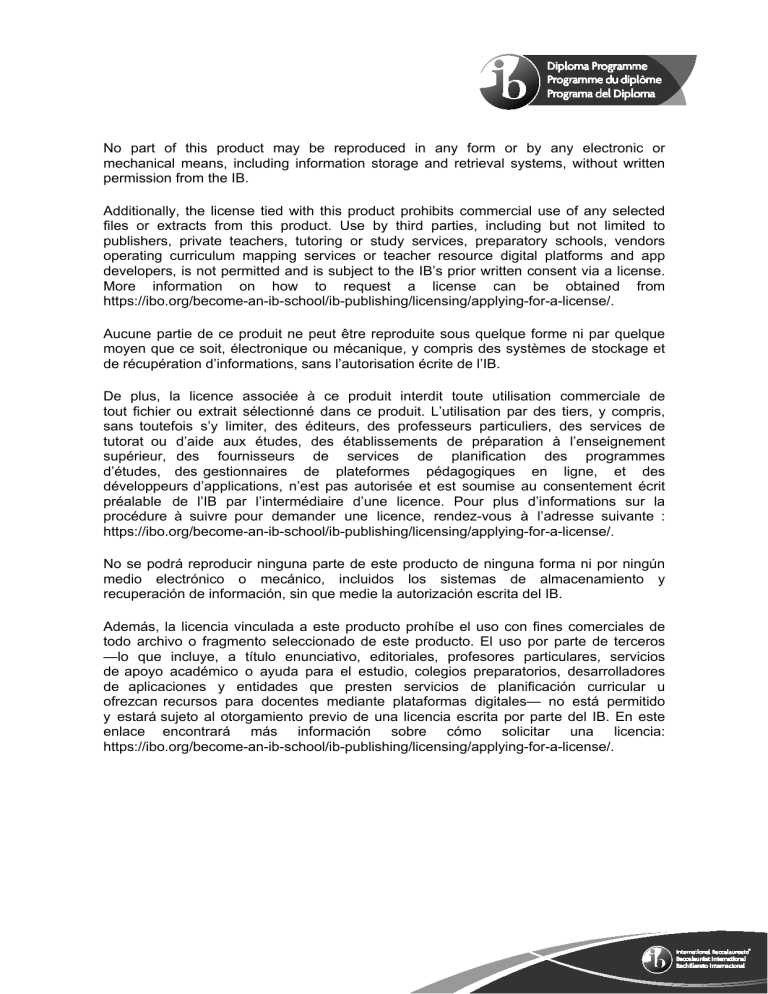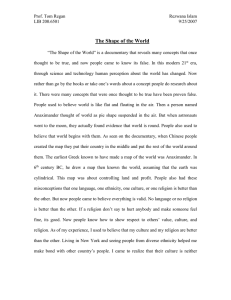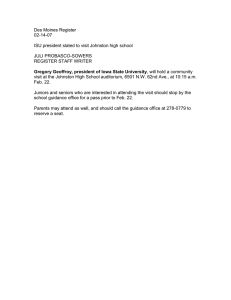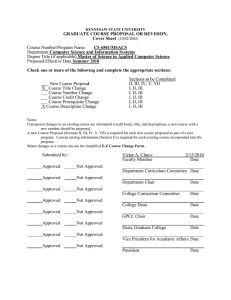
No part of this product may be reproduced in any form or by any electronic or mechanical means, including information storage and retrieval systems, without written permission from the IB. Additionally, the license tied with this product prohibits commercial use of any selected files or extracts from this product. Use by third parties, including but not limited to publishers, private teachers, tutoring or study services, preparatory schools, vendors operating curriculum mapping services or teacher resource digital platforms and app developers, is not permitted and is subject to the IB’s prior written consent via a license. More information on how to request a license can be obtained from https://ibo.org/become-an-ib-school/ib-publishing/licensing/applying-for-a-license/. Aucune partie de ce produit ne peut être reproduite sous quelque forme ni par quelque moyen que ce soit, électronique ou mécanique, y compris des systèmes de stockage et de récupération d’informations, sans l’autorisation écrite de l’IB. De plus, la licence associée à ce produit interdit toute utilisation commerciale de tout fichier ou extrait sélectionné dans ce produit. L’utilisation par des tiers, y compris, sans toutefois s’y limiter, des éditeurs, des professeurs particuliers, des services de tutorat ou d’aide aux études, des établissements de préparation à l’enseignement supérieur, des fournisseurs de services de planification des programmes d’études, des gestionnaires de plateformes pédagogiques en ligne, et des développeurs d’applications, n’est pas autorisée et est soumise au consentement écrit préalable de l’IB par l’intermédiaire d’une licence. Pour plus d’informations sur la procédure à suivre pour demander une licence, rendez-vous à l’adresse suivante : https://ibo.org/become-an-ib-school/ib-publishing/licensing/applying-for-a-license/. No se podrá reproducir ninguna parte de este producto de ninguna forma ni por ningún medio electrónico o mecánico, incluidos los sistemas de almacenamiento y recuperación de información, sin que medie la autorización escrita del IB. Además, la licencia vinculada a este producto prohíbe el uso con fines comerciales de todo archivo o fragmento seleccionado de este producto. El uso por parte de terceros —lo que incluye, a título enunciativo, editoriales, profesores particulares, servicios de apoyo académico o ayuda para el estudio, colegios preparatorios, desarrolladores de aplicaciones y entidades que presten servicios de planificación curricular u ofrezcan recursos para docentes mediante plataformas digitales— no está permitido y estará sujeto al otorgamiento previo de una licencia escrita por parte del IB. En este enlace encontrará más información sobre cómo solicitar una licencia: https://ibo.org/become-an-ib-school/ib-publishing/licensing/applying-for-a-license/. Physics Higher level Paper 1 Wednesday 28 October 2020 (afternoon) 1 hour Instructions to candidates y Do not open this examination paper until instructed to do so. y Answer all the questions. y For each question, choose the answer you consider to be the best and indicate your choice on the answer sheet provided. y A clean copy of the physics data booklet is required for this paper. y The maximum mark for this examination paper is [40 marks]. 17 pages 8820 – 6501 © International Baccalaureate Organization 2020 –2– 1. 2. 3. 8820 – 6501 Which quantity has the same units as those for energy stored per unit volume? A. Density B. Force C. Momentum D. Pressure An object of mass 8.0 kg is falling vertically through the air. The drag force acting on the object is 60 N. What is the best estimate of the acceleration of the object? A. Zero B. 2.5 m s–2 C. 7.5 m s–2 D. 10 m s–2 A body is held in translational equilibrium by three coplanar forces of magnitude 3 N, 4 N and 5 N. Three statements about these forces are I. II. III. all forces are perpendicular to each other the forces cannot act in the same direction the vector sum of the forces is equal to zero. Which statements are true? 4. A. I and II only B. I and III only C. II and III only D. I, II and III An object of mass 1 kg is thrown downwards from a height of 20 m. The initial speed of the object is 6 m s–1. The object hits the ground at a speed of 20 m s–1. Assume g = 10 m s–2. What is the best estimate of the energy transferred from the object to the air as it falls? A. 6J B. 18 J C. 182 J D. 200 J –3– 5. 6. 7. 8. 8820 – 6501 A car is driven from rest along a straight horizontal road. The car engine exerts a constant driving force. Friction and air resistance are negligible. How does the power developed by the engine change with the distance travelled? A. Power does not change. B. Power decreases linearly. C. Power increases linearly. D. Power increases non-linearly. An object of mass 2m moving at velocity 3v collides with a stationary object of mass 4m. The objects stick together after the collision. What is the final speed and the change in total kinetic energy immediately after the collision? Final speed Change in total kinetic energy A. v 3 mv 2 B. v 6 mv 2 C. 2v 3 mv 2 D. 2v 6 mv 2 What is not an assumption of the kinetic model of an ideal gas? A. Attractive forces between molecules are negligible. B. Collision duration is negligible compared with time between collisions. C. Molecules suffer negligible momentum change during wall collisions. D. Molecular volume is negligible compared with gas volume. A substance in the gas state has a density about 1000 times less than when it is in the liquid state. The diameter of a molecule is d. What is the best estimate of the average distance between molecules in the gas state? A. d B. 10d C. 100d D. 1000d Turn over –4– 9. 10. 11. 8820 – 6501 Two containers X and Y are maintained at the same temperature. X has volume 4 m3 and Y has volume 6 m3. They both hold an ideal gas. The pressure in X is 100 Pa and the pressure in Y is 50 Pa. The containers are then joined by a tube of negligible volume. What is the final pressure in the containers? A. 70 Pa B. 75 Pa C. 80 Pa D. 150 Pa An object moves with simple harmonic motion. The acceleration of the object is A. constant. B. always directed away from the centre of the oscillation. C. a maximum at the centre of the oscillation. D. a maximum at the extremes of the oscillation. A travelling wave has a frequency of 500 Hz. The closest distance between two points on the π rad is 0.050 m. What is the speed of the wave? 3 wave that have a phase difference of 60 A. 25 m s–1 B. 75 m s–1 C. 150 m s–1 D. 300 m s–1 –5– 12. 8820 – 6501 Wavefronts travel from air to medium Q as shown. air Q 45° 30° What is the refractive index of Q? 13. A. sin 30o sin 45o B. sin 45o sin 30o C. sin 45o sin 60o D. sin 60o sin 45o The air in a pipe, open at both ends, vibrates in the second harmonic mode. P Q What is the phase difference between the motion of a particle at P and the motion of a particle at Q? A. 0 C. π 2 π D. 2π B. Turn over –6– 14. 15. 8820 – 6501 A metal wire has n free charge carriers per unit volume. The charge on the carrier is q. What additional quantity is needed to determine the current per unit area in the wire? A. Cross-sectional area of the wire B. Drift speed of charge carriers C. Potential difference across the wire D. Resistivity of the metal A cell of electromotive force (emf) E and zero internal resistance is in the circuit shown. U Z 2R R I1 W R R I3 X What is correct for loop WXYUW? A. E = 3I1R – I3R B. E = I3 R – I2 R C. E = I3 R D. E = 2I2R – I3R Y I2 R –7– 16. 17. 8820 – 6501 What is the relationship between the resistivity ρ of a uniform wire, the radius r of the wire and the length l of the wire when its resistance is constant? A. ρ ∝ r 2l B. ρ ∝ rl 2 C. ρ∝ l r2 D. ρ∝ r2 l A power station generates 250 kW of power at a potential difference of 25 kV. The energy is transmitted through cables of total resistance 4.0 Ω. What is the power loss in the cables? 18. A. 0.04 kW B. 0.4 kW C. 4 kW D. 40 kW An electrical power supply has an internal resistance. It supplies a direct current I to an external circuit for a time t. What is the electromotive force (emf) of the power supply? A. B. C. D. total energy transferred to the whole circuit I ×t total power transferred to the whole circuit I ×t total energy transferred to the external circuit I ×t total power transferred to the external circuit I ×t Turn over –8– 19. 8820 – 6501 A current in a wire lies between the poles of a magnet. What is the direction of the electromagnetic force on the wire? A. N D. B. S C. current 20. Mass M is attached to one end of a string. The string is passed through a hollow tube and mass m is attached to the other end. Friction between the tube and string is negligible. r m M Mass m travels at constant speed v in a horizontal circle of radius r. What is mass M? A. mv 2 r B. mv 2rg C. mgv 2 r D. mv 2 gr –9– 21. 8820 – 6501 Four of the energy states for an atom are shown. Transition between any two states is possible. E4 to scale E3 energy increasing E2 E1 What is the shortest wavelength of radiation that can be emitted from these four states? A. hc E4 - E1 B. hc hc E4 E1 C. hc E 4 - E3 D. hc hc E 4 E3 Turn over – 10 – 22. 8820 – 6501 The Feynman diagram shows some of the changes in a proton–proton collision. u u u d d d time What is the equation for this collision? 23. A. p + p → p + n + π+ B. p + p → p + n + π- C. p + p → p + n̄ + π+ D. p + p → p + n̄ + π- Three historical developments in physics were I. II. III. wave–particle duality the kinetic model the equivalence of mass and energy. Which of these represented a paradigm shift in scientific thinking? A. I and II only B. I and III only C. II and III only D. I, II and III – 11 – 24. 25. 26. 8820 – 6501 The mass of nuclear fuel in a nuclear reactor decreases at the rate of 8 mg every hour. The overall reaction process has an efficiency of 50 %. What is the maximum power output of the reactor? A. 100 MW B. 200 MW C. 100 GW D. 200 GW A nuclear power station contains an alternating current generator. What energy transfer is performed by the generator? A. Electrical to kinetic B. Kinetic to electrical C. Nuclear to kinetic D. Nuclear to electrical The average temperature of the surface of a planet is five times greater than the average temperature of the surface of its moon. The emissivities of the planet and the moon are the same. The average intensity radiated by the planet is I . What is the average intensity radiated by its moon? A. I 25 B. I 125 C. I 625 D. I 3125 Turn over – 12 – 27. A simple pendulum and a mass–spring system oscillate with the same time period. The mass of the pendulum bob and the mass on the spring are initially identical. The masses are halved. time period of pendulum when the masses have been changed? time period of mass-spring system What is 2 2 A. B. 1 C. D. 28. 29. 8820 – 6501 2 2 Light is incident on a diffraction grating. The wavelengths of two spectral lines of the light differ by 0.59 nm and have a mean wavelength of 590 nm. The spectral lines are just resolved in the fourth order of the grating. What is the minimum number of grating lines that were illuminated? A. 25 B. 250 C. 1000 D. 4000 White light is incident normally on separate diffraction gratings X and Y. Y has a greater number of lines per metre than X. Three statements about differences between X and Y are I. II. III. adjacent slits in the gratings are further apart for X than for Y the angle between red and blue light in a spectral order is greater in X than in Y the total number of visible orders is greater for X than for Y. Which statements are correct? A. I and II only B. I and III only C. II and III only D. I, II and III – 13 – 30. 31. 8820 – 6501 Two satellites W and X have the same mass. They have circular orbits around the same planet. W is closer to the surface than X. What quantity is smaller for W than for X? A. Gravitational force from the planet B. Angular velocity C. Orbital speed D. Orbital period P and S are two points on a gravitational equipotential surface around a planet. Q and R are two points on a different gravitational equipotential surface at a greater distance from the planet. Q P S R The greatest work done by the gravitational force is when moving a mass from A. P to S. B. Q to R. C. R to P. D. S to R. Turn over – 14 – 32. 8820 – 6501 The graph shows the variation of electric field strength E with distance r from a point charge. E X r1 r2 r The shaded area X is the area under the graph between two separations r1 and r2 from the charge. What is X? 33. A. The electric field average between r1 and r2 B. The electric potential difference between r1 and r2 C. The work done in moving a charge from r1 to r2 D. The work done in moving a charge from r2 to r1 Why are high voltages and low currents used when electricity is transmitted over long distances? A. Cables can be closer to the ground. B. Electrons have a greater drift speed. C. Energy losses are reduced. D. Resistance of the power lines is reduced. – 15 – 34. 8820 – 6501 Power P is dissipated in a resistor of resistance R when there is a direct current I in the resistor. R when the alternating 2 What is the average power dissipation in a resistance root-mean-square (rms) current in the resistor is 2 I ? 35. A. P B. 2P C. 4P D. 8P A rectangular coil rotates at a constant angular velocity. At the instant shown, the plane of the coil is at right angles to the line ZZ′. A uniform magnetic field acts in the direction ZZ′. Y' X' Z E 00 Z' X t Y What rotation of the coil about a specified axis will produce the graph of electromotive force (emf) E against time t ? π about ZZ′ A. Through B. Through π about YY′ C. Through D. Through π about XX′ 2 π 2 about XX′ Turn over – 16 – 36. 8820 – 6501 A capacitor of capacitance C has initial charge Q. The capacitor is discharged through a resistor of resistance R. The potential difference V across the capacitor varies with time. What is true for this capacitor? 37. 38. RC the potential difference across the capacitor is halved. 2 A. After time B. The capacitor discharges more quickly when the resistance is changed to 2R. C. The rate of change of charge on the capacitor is proportional to V. D. The time for the capacitor to lose half its charge is In 2 . RC Monochromatic light is incident on a metal surface and electrons are released. The intensity of the incident light is increased. What changes, if any, occur to the rate of emission of electrons and to the kinetic energy of the emitted electrons? Rate of emission of electrons Kinetic energy of the emitted electrons A. increase increase B. decrease no change C. decrease increase D. increase no change The diameter of a nucleus of a particular nuclide X is 12 fm. What is the nucleon number of X? A. 5 B. 10 C. 125 D. 155 – 17 – 39. 40. A photon has a wavelength λ. What are the energy and momentum of the photon? Energy of photon Momentum of photon A. hc λ h λ B. hc λ λ h C. hλ c h λ D. hλ c λ h The Rutherford-Geiger-Marsden experiment shows that A. alpha particles do not obey Coulomb’s law. B. there is a fixed nuclear radius for each nucleus. C. a large proportion of alpha particles are undeflected. D. the Bohr model of the hydrogen atom is confirmed. 8820 – 6501




